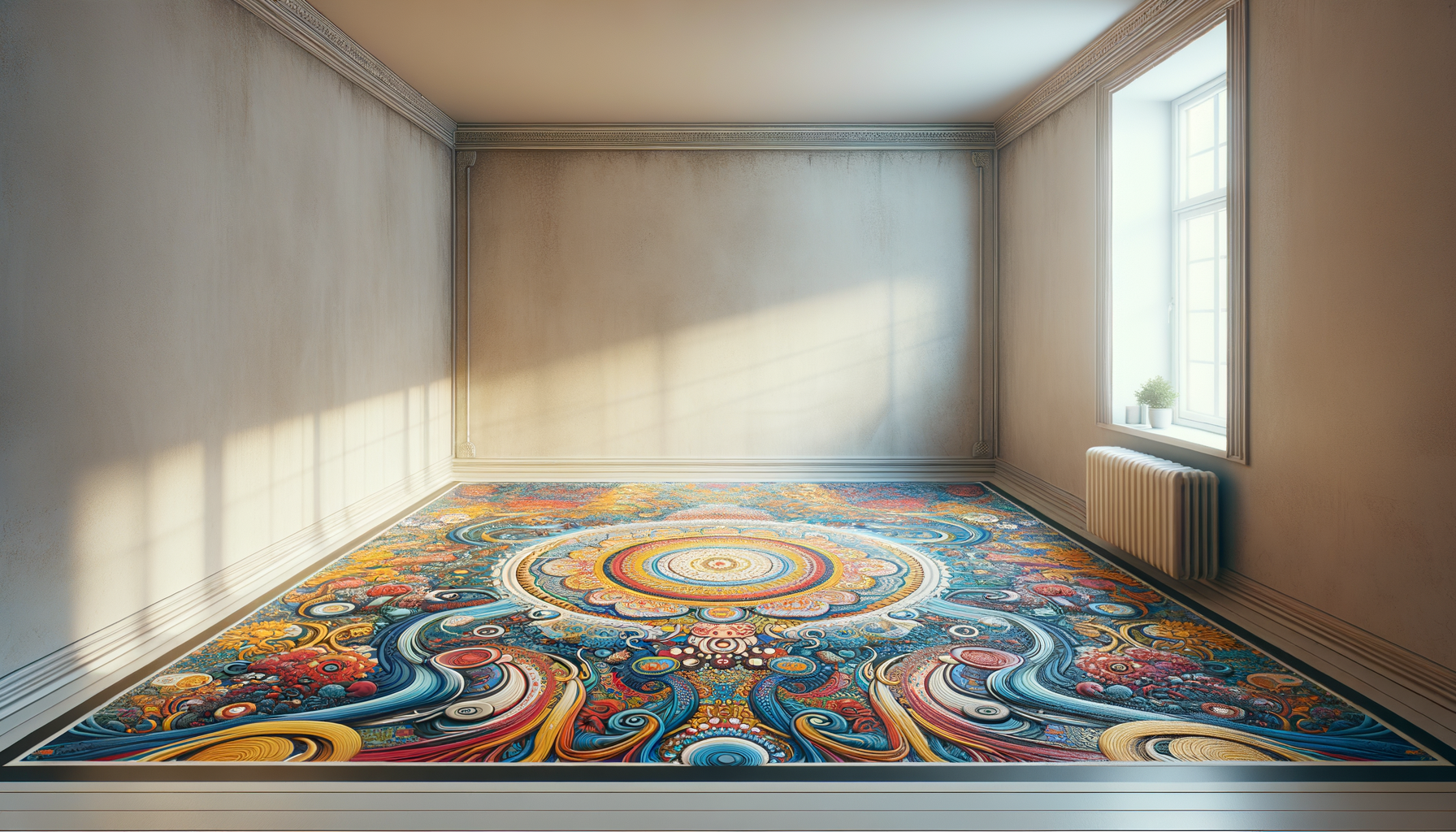Understanding Floor Painting: An Overview
Floor painting is a versatile technique used to enhance the aesthetic appeal and durability of floors in both residential and commercial settings. Unlike traditional flooring options, floor painting allows for creative expression and customization, making it a popular choice for those looking to personalize their space. The process involves applying a layer of paint or coating to the floor surface, which can be tailored to achieve various finishes, from glossy to matte.
One of the primary benefits of floor painting is its ability to protect the underlying surface from wear and tear. By creating a barrier, the paint helps in resisting stains, moisture, and scratches, thereby extending the life of the flooring. This is particularly advantageous in high-traffic areas where floors are prone to damage. Additionally, floor painting can be an economical alternative to more expensive flooring options, providing a cost-effective way to revamp a space without extensive renovations.
Floor painting is not just about aesthetics; it also plays a crucial role in safety. For instance, non-slip coatings can be applied to reduce the risk of accidents in wet or oily environments, such as kitchens or industrial settings. Moreover, the choice of colors and patterns can influence the mood and perception of a space, making it an important tool in interior design.
Types of Floor Paints and Their Applications
Choosing the right type of floor paint is essential to achieving the desired outcome. There are several types of floor paints available, each with its specific properties and applications. Understanding these options can help in selecting the most suitable paint for a particular environment.
Epoxy floor paint is renowned for its durability and resistance to chemicals, making it a preferred choice for industrial and commercial spaces. It forms a hard, protective layer that can withstand heavy machinery and frequent cleaning, making it ideal for warehouses and garages. On the other hand, latex floor paint offers flexibility and ease of application, making it suitable for residential areas. It is water-based, dries quickly, and is available in a wide range of colors.
Polyurethane floor paint is another popular option, known for its excellent resistance to abrasion and UV rays. This makes it suitable for outdoor spaces or areas exposed to sunlight. Additionally, there are specialty paints designed for specific needs, such as anti-slip paints for safety and metallic paints for a unique, shimmering effect.
When selecting a floor paint, it’s important to consider the environment in which it will be applied, the level of traffic, and the desired finish. Each type of paint has its advantages and limitations, and understanding these can help in making an informed decision.
The Process of Floor Painting: Step-by-Step Guide
Successfully painting a floor requires careful preparation and execution. The process begins with thorough cleaning of the surface to remove any dirt, grease, or old paint. This step is crucial as it ensures proper adhesion of the new paint. Depending on the condition of the floor, sanding or etching may be necessary to create a smooth, even surface.
Once the floor is clean and prepared, the next step is to apply a primer. Priming is essential as it helps the paint adhere better and enhances the durability of the finish. After the primer has dried, the floor paint can be applied using a roller or brush, depending on the size of the area and the desired texture. Applying multiple thin coats rather than one thick coat is recommended for a more even finish.
It’s important to allow adequate drying time between coats, as rushing this process can lead to imperfections and a less durable finish. Once the final coat is applied, the floor should be left to cure for at least 24 to 48 hours before it is used. This curing time allows the paint to fully harden and ensures a long-lasting result.
Throughout the process, attention to detail is key. Ensuring proper ventilation, using quality materials, and following manufacturer instructions can significantly impact the outcome of the floor painting project.
Creative Floor Painting Ideas for Different Spaces
Floor painting opens up a world of creative possibilities, allowing homeowners and designers to experiment with various patterns, colors, and effects. One popular trend is the use of geometric patterns, which can add a modern and dynamic touch to any room. By using tape to create clean lines, intricate designs can be achieved that transform a plain floor into a work of art.
For those looking to make a bold statement, using contrasting colors or creating a checkerboard pattern can add visual interest and depth to a space. This is particularly effective in large, open areas where the floor can serve as a focal point. Additionally, incorporating stencils or custom designs can personalize a space, reflecting the personality and style of the inhabitants.
In outdoor spaces, such as patios or porches, floor painting can be used to mimic the look of natural materials like stone or wood. This can create a cohesive and inviting outdoor environment without the cost and maintenance associated with real materials. Moreover, using bright, cheerful colors can liven up a space, making it more enjoyable and welcoming.
Ultimately, the possibilities with floor painting are limited only by imagination. Whether aiming for a subtle enhancement or a dramatic transformation, floor painting offers a versatile and cost-effective way to refresh any space.
Maintaining Painted Floors: Tips for Longevity
Once a floor has been painted, proper maintenance is essential to preserve its appearance and functionality. Regular cleaning is crucial to prevent dirt and debris from scratching the surface. Using a soft broom or vacuum cleaner can help in removing loose particles without damaging the paint.
For deeper cleaning, a mild detergent and water solution can be used. It’s important to avoid harsh chemicals or abrasive cleaning tools, as these can wear down the paint over time. In areas prone to moisture, such as bathrooms or kitchens, ensuring proper ventilation can help in preventing mold and mildew growth.
Periodic touch-ups may be necessary, especially in high-traffic areas where the paint may wear more quickly. Keeping extra paint on hand can make this process easier and ensure a consistent color match. Additionally, applying a clear topcoat or sealant can provide an extra layer of protection, enhancing the durability of the painted floor.
By following these maintenance tips, painted floors can retain their beauty and functionality for years, proving that with a little care, a painted floor can be both a practical and stylish choice.



Leave a Reply